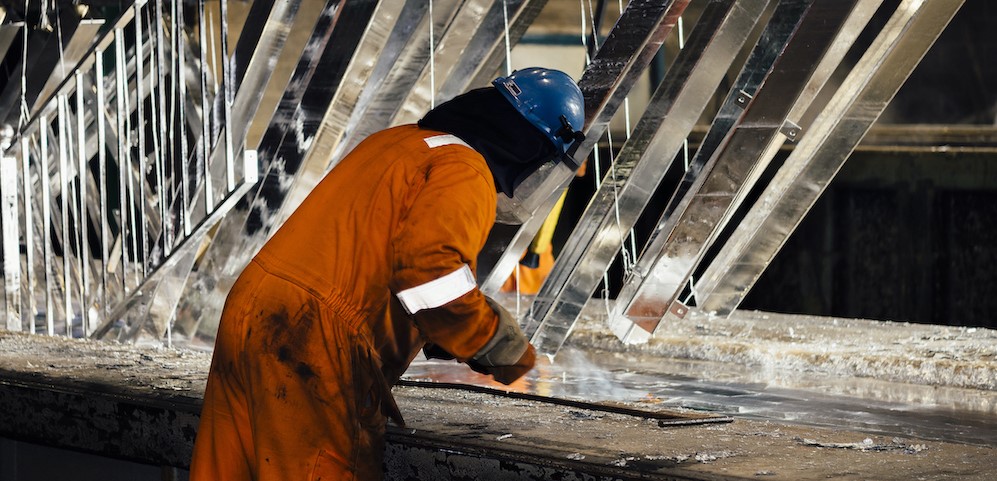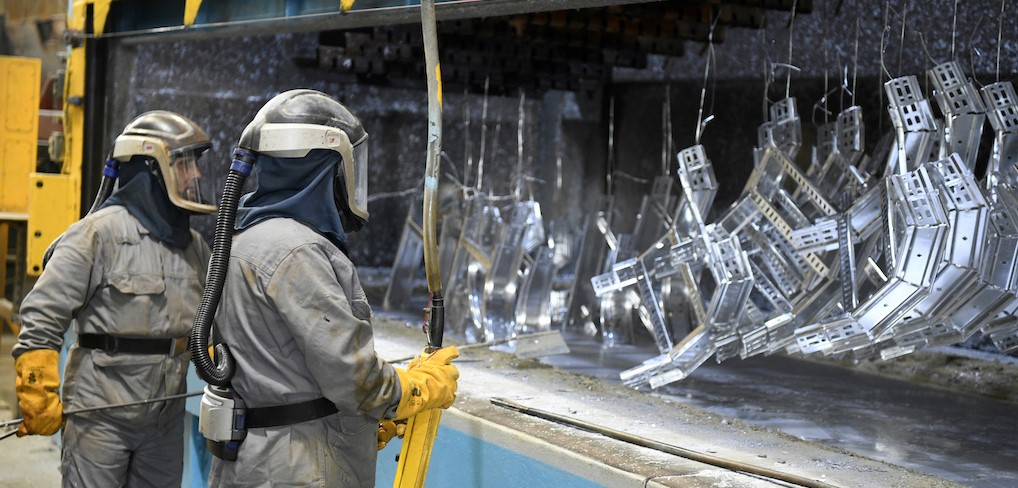What is galvanizing?
Have you heard of galvanizing, but are unsure of what it means? Look no further, as we cover everything to know about this corrosion protection process here.

Galvanizing definition
Galvanizing, or galvanising as it is spelt in the UK, is a metal protection process that involves coating iron or steel with a layer of zinc. The zinc coating acts as a barrier for the metal, protecting it from rust and corrosion.
Hot dip galvanizing is the most established method of galvanizing. Most steel finishing providers in the UK offer hot dip galvanizing rather than its alternatives. Without galvanizing, metal corrodes quickly, as the metal is exposed to moisture and other sources of corrosion.
The galvanizing process
There are many stages to hot dip galvanizing, but in summary, it can be divided into four stages: cleaning, fluxing, galvanizing, and post-treatment.
Cleaning
First, the metal is cleaned and degreased, using an alkaline solution that is heated with the residual heat from the galvanizing furnace. The cleanliness of the alkaline solution is maintained, as it continuously flows through an oil separation unit to remove residual oils.
After this, acid cleaning takes place with tanks containing hydrochloric acid. Inhibitor is added to reduce chloride emissions, reduce maintenance of the facilities and improve working conditions for our employees. Spent acid – meaning acid that has become weaker from the cleaning process – is reused, neutralising alkali wastes from other processes.
Fluxing
Once the steel has been cleaned, it is dipped in a flux solution. A flux solution is made of zinc-ammonium chloride which, like the alkaline solution in the cleaning process, is heated with residual heat from the galvanizing surface. The fluxing process removes the remaining traces of oxide and helps prepare the metal for the zinc bath.
Galvanizing
After fluxing, the metal is dipped into a bath of molten zinc. This process forms a metallurgical bond between the zinc and the metal, which means the atoms between them chemically bond instead of just applying a top level coating on the metal surface. The protective zinc coating creates a durable, corrosion-resistant finish that can withstand extreme temperatures, harsh environments, and corrosion.
Post-treatment
Finally, an optional follow-up coat such as paint or powder coating can be applied. While not part of the galvanizing process itself, post-treatment further increases the metal’s durability and corrosion-resistance.
Post-treatment can also include quenching and passivation. These are also optional, but can help preserve the steel further and protect against wet storage stains.
We’ve created a useful animation that showcases the hot dip galvanizing process.

Different types of galvanizing
The above process applies for hot dip galvanizing, but there are numerous types of galvanizing, including:
Hot dip galvanizing
During hot dip galvanizing, metal is dipped into a bath of hot zinc, as detailed before. The heat causes a chemical reaction, causing the zinc to metallurgically bond to the steel. This process makes the metal much more durable compared to surface-level coatings such as paint.
More technically, the process creates a sacrificial anode cathodic protection layer, causing the zinc to corrode in preference to the iron.
There are many reasons to hot dip galvanize your steel, such as increased durability and low lifetime costs.
Cold galvanizing
The metal is coated with cold zinc. Unlike hot dip galvanizing, cold galvanizing does not cause the zinc to metallurgically bond to the metal as there is no heat. As a result, it is not the preferred method of galvanizing, as the zinc layer is prone to chipping. Some argue that it isn’t a form of galvanizing at all.
Spin galvanizing
Spin galvanizing is a method for coating metal that is too small to be dipped directly into a bath. To stop the small pieces getting lost in the bath, they are placed inside a perforated basket first. After being withdrawn from the bath, the basket is spun at high speeds to remove the excess zinc. Like hot dip galvanizing, spin galvanizing has many benefits, as it is the same process but for smaller sized pieces.
Joseph Ash Galvanizing offers a range of galvanizing services to meet your needs, from small components to large structures. Our team of experts use state-of-the-art technology and equipment to ensure that your products are galvanized to the highest standards. Galvanizing is also environmentally friendly, using minimal energy and producing no hazardous waste.
Galvanizing services throughout the UK
No matter your size or sector, Joseph Ash Galvanizing can provide you with a high-quality galvanizing service that will protect your metal products and increase their lifespan.
- Nine sites across the UK ✔️
- Protect steel from rust and corrosion ✔️
- Quality Systems approved to BS EN ISO 9001 ✔️
- Quick turnaround times ✔️
- On-site storage facilities ✔️